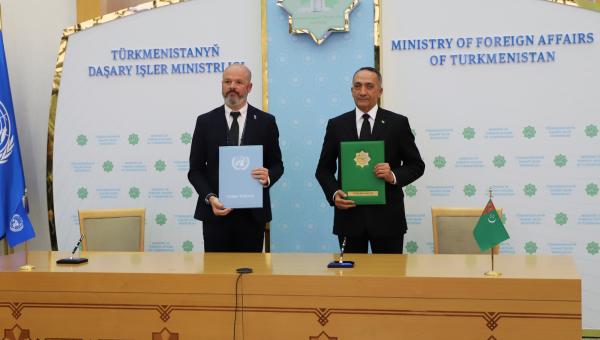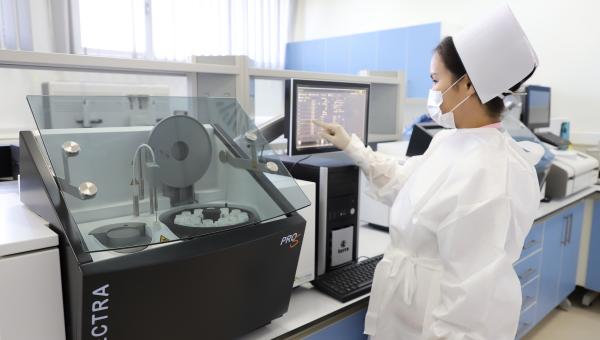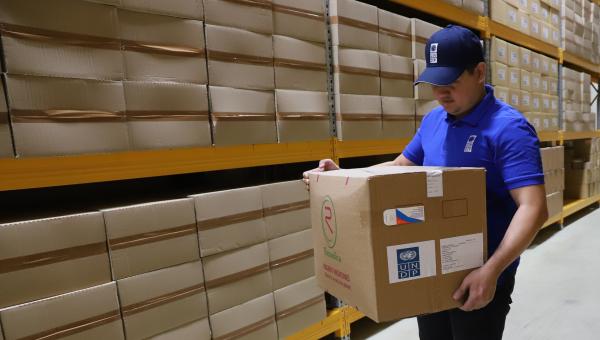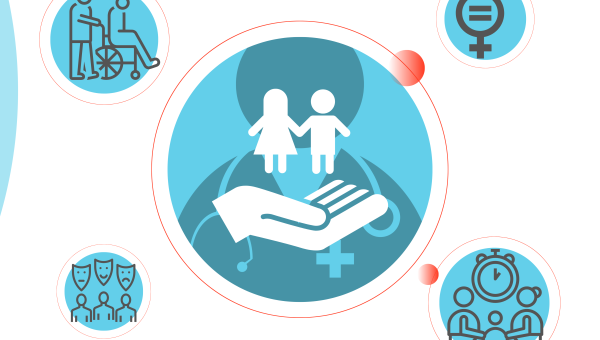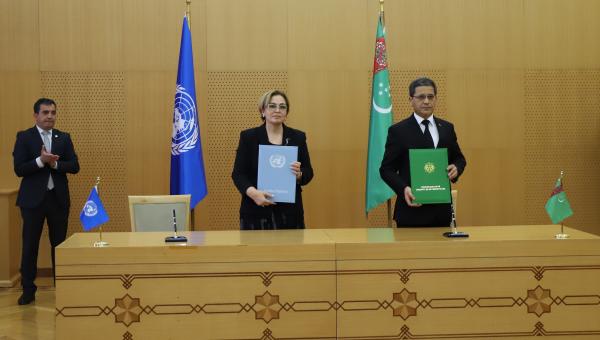Procurement of medicines and health products for the control of noncommunicable diseases (NCD) in Turkmenistan through UNDP
This project will provide technical support to the Ministry of Health and Medical Industry of Turkmenistan in the implementation of the National Programme for control of noncommunicable diseases in Turkmenistan through procurement of medical products for prevention and treatment of:
- Cardio-vascular diseases;
- Oncological diseases;
- Endocrinological diseases;
- Respiratory diseases;
- Neurological diseases;
- Other noncommunicable diseases, if required
At present continuous and quality-assured health services are of particular concern worldwide as the COVID-19 pandemic caused “supply shock” due to disruption of global manufacturing and transportation of goods. According to a WHO survey 2020, prevention and treatment services for NCDs have been severely disrupted everywhere since the pandemic began. Unavailability/stock outs of essential medicines or technologies disrupted NCD services in one in five countries. The procurement of health products in this project will contribute to the implementation of Preparedness and Response Plan of Turkmenistan to Acute Respiratory Infection and Immediate socio-economic response plan to acute infectious disease as both set the quality and access to essential health services for the population of Turkmenistan as the top priority.
Ensuring gender equality and improving women's health
The project will help ensure gender equality and overcome disparities in structure of morbidity among women and disproportionately high mortality among men. It was noted that among men there is a higher level of premature mortality due to cardiovascular diseases, not only in Turkmenistan but throughout the European region[1]. Levels of physical activity, a less healthy diet, tobacco and alcohol use among men are generally higher in view of the “masculine” pattern of behavior. At the same time, men of all age groups and educational levels are less likely to seek medical help. For those reasons, in the countries of the Commonwealth of Independent States, where the mortality rates from cardiovascular diseases are highest in the European Region, identification of men as the target population for strategies to prevent tobacco and alcohol use and increase access to and sustainability of health services is crucial for reducing inequality between men and women.[2] [3]
For women, the perception of risk of cardiovascular disease is low among both women and health workers, despite they are the leading cause of death among women in the Region. Among women (including in Turkmenistan)[4] there is a higher level of obesity and low physical activity[5]. Across the WHO European Region, women at age over 50 years have the risk of premature mortality from cardiovascular disease similar to those in men[6]. Factual data also highlights increased level and persistence of depression among older women in all countries[7]. In addition, gender norms may limit women's access to economic resources and services that require payment. The availability of health services in the immediate vicinity of community reduces gender-related barriers to accessing, using and/or following preventive services for women and girls.
Breast cancer ranks first among all cancers in Turkmenistan, accounting for 1,025 new cases and for 450 deaths among women. Cervix cancer ranks fourths, with 461 new cases and 250 deaths annually. Stomach and lung cancer are the 2nd and 3rd common cancer, respectively, responsible for more than 1,000 per year altogether; these types of cancer occur in both sexes, but men develop it more often[8]:
The risk factors for NCDs such as smoking, alcohol, physical inactivty and unhealthy diet are tackled by the Government through the state programmes covering the population of all age groups, but primarily youth. This project will prioritize people who already have NCDs and will ensure equal access to health services, taking into account specific needs of men and women.
The project will significantly improve women’s health through:
- Providing treatment for breast cancer and other gynecological cancers – the major causes of death among women, accounting for an estimated 1,700 new cases per year. Overall, there are more than 3,800 various cancer cases detected among women per year and 2,188 deaths[9] that can be avoided with the right treatment.
- Providing medicines for women during pregnancy, childbirth and the postnatal period, particularly for women from vulnerable groups, to reduce maternal and neonatal mortality.
- Providing treatment for obesity, thyroid diseases, and other endocrine diseases more frequent in women.
The project will contribute to improving men’s health through:
- Ensuring treatment for the cardiovascular diseases – the first cause of death among men
- Ensuring treatment for cancers that account for about 3,049 diseases and 2,147 deaths per year
- Reducing NCD-caused deaths and probability of dying between age 30 and exact age 70 from any NCD (33.9% in men vs. 22.3% in women) and reducing men-women gap in life expectancy (66.5 vs. 73 years)[10].
[1] Why using a gender approach can accelerate noncommunicable disease prevention and control in the WHO European region. WHO, 2019.
[2] Информационные бюллетени ВОЗ о Целях в области устойчивого развития: задачи, связанные со здоровьем: Неинфекционные заболевания. WHO, 2018.
[3] Action plan for the prevention and control of noncommunicable diseases in the WHO European Region, WHO, 2016.
[4] Turkmenistan Profile. World Health Organization – Noncommunicable diseases country profiles, WHO, 2018.
[5] Better noncommunicable disease outcomes: challenges and opportunities for health systems. Turkmenistan country assessment, WHO, 2019.
[6] Towards a Europe free of avoidable noncommunicable diseases: The future course of premature mortality in the WHO European region. WHO, 2017.
[7] Why using a gender approach can accelerate noncommunicable disease prevention and control in the WHO European region. WHO, 2019.
[8] Cancer profile for Turkmenistan: Global Cancer Observatory, 2020 https://gco.iarc.fr/today/data/factsheets/populations/795-turkmenistan-fact-sheets.pdf
[9] Cancer profile for Turkmenistan: Global Cancer Observatory, 2020 https://gco.iarc.fr/today/data/factsheets/populations/795-turkmenistan-fact-sheets.pdf

 Locations
Locations
